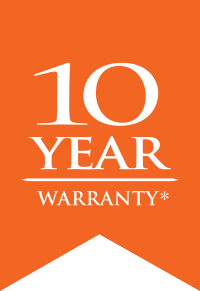Please click on each item to show their answers.
The national environmental standards for air quality are 14 standards set for the protection of human health. These standards include:
five outdoor air quality standards (limits for air pollution)
seven standards that ban activities which discharge toxic substances to the air
a design standard for new wood burners in urban areas
a standard requiring landfills to collect and destroy their greenhouse gas emissions.
All new wood burners installed after 1 September 2005 must have a particle emission of less than 1.5 grams per kilogram of dry wood burnt.
They must also have a thermal efficiency of greater than 65%.
The requirements exclude open fires, multi-fuel heaters, pellet heaters, and cooking stoves.
Note: some council’s may have more stringent rules
Everywhere in New Zealand on properties of less than 2 Ha.
Treated timber is treated with a preservative called Chromate Copper Arsenate (CCA) or other chemicals. Timber is generally treated with a preservative to resist decay and insect attack to make it more suitable for use as building material. It should not be burned in wood burners or open fires.
No. Burning treated timber in wood burners or open fires may result in harmful pollutants being released into the air, which can be bad for human health. You should not burn timber from building sites, fences or decks as this may be treated.
No. The air quality standards are national regulations, so it would be illegal to use a non-compliant wood burner if it was installed on a property less than 2 Ha in size after September 2005.
The air quality standards also require regional councils to meet limits for air pollution by 2013. In the more polluted areas of New Zealand, regional councils may impose more stringent rules on burners to ensure they meet the standards by 2013.
The Ministry provides a national list of authorised wood burners. This list contains burners that comply with the wood burner standard. Including Firenzo of course! http://www.mfe.govt.nz/laws/standards/woodburners/authorised-woodburners.html
There are two steps for a burner to be authorised:
The emissions and efficiency are tested by a laboratory. The laboratory issues a test report to state whether it meets the emissions and efficiency standards.
An alternative authorisation scheme was introduced (June 2011) for wood burners that are excluded from being tested using the prescribed AS/NZS testing protocol. These wood burners can now demonstrate compliance with the National Environmental Standards for Air Quality using a functionally equivalent method.
The burner is then physically checked against the test report by an independent body (this is done by Environment Canterbury or Nelson City Council).
We advise caution. Yes, if the burner has been tested in accordance with AS/NZ4012:1999 and AS/NZ4013:1999 to demonstrate it meets the standards or was authorised using a functionally equivalent method.
However, we advise the district and city councils to give building consents only to those wood burners present on the authorised list. This is because wood burners advertised on the authorised list have been through a rigorous checking process to assess compliance. A national review of performance of wood burners in 2006 revealed poor compliance overall. If a wood burner has not been through the authorisation process, there is less certainty that it is compliant with the standards
MFE strongly urge people to only purchase burners on the authorised list for their own protection.
You can still install a second hand wood burner as long as it meets the standards or if you live on a property of 2Ha or greater. It should be noted that older second-hand burners are less likely to meet the standards.
Multi-fuel and coal burners are outside our regulations.
Some council’s regulate multi-fuel and or coal burners through their regional rules. You will need to find out from your regional council whether it is legal to install these burners in your region.
As long as it is designed and used for cooking and is heated by burning wood, you can install a cooking stove.
A good indication of a cooking stove is one that contains an oven. A hot plate on top of a freestanding wood burner is not a cooking stove.
Wetbacks have not been banned. They simply have to meet the minimum efficiency standard of 65%.
There are a number of wetback burner options on our list of authorised wood burners.
Authorised wood burners have been designed and tested to ensure that they meet emissions and efficiency limits set out in the National Environmental Standards for Air Quality. Modifications may result in more emissions being discharged and an increase in fuel use. Modifying your wood burner without the advice of the manufacturer may also lead to safety risks (fire hazards). As such, we strongly advise that you contact your wood burner retailer or manufacturer before making any modifications to your wood burner.
You can still install burners that do not meet the standard on a property of 2ha or greater.
Most built up areas in New Zealand suffer from air pollution during winter. Our focus is on improving air quality in those areas. As there is no nationally consistent definition for an urban environment, a property size of less than 2 Ha was used. New Zealand also has to honour the Trans-Tasman Mutual Recognition Agreement (TTMRA) with Australia which says they can sell their products here and vice versa. The Australian wood burners are made to an emission limit of 4.0 g/kg with no efficiency requirement, so they do not always meet our standard.
Open fires are outside the national environmental standards. However, a number or regional councils have rules about open fires in their regional plan. You will need to contact your regional council to see whether it is legal to install an open fire in your region. See ''Why do certain regional councils have more stringent rules than the national standard?'' via the MFE website for more information.
Your local city or district council.
Technically an existing burner that is moved within a house is considered a newly installed burner and therefore must meet the standard.
The wood burner standard is not retrospective, so existing wood burners will not be affected.
Note: Some councils may have more stringent rules about existing burners. See ''why do certain regional councils have more stringent rules than the national standard?'' via the MFE website for more information.
Our authorised list shows the results from our recent 'National Performance Review of Wood burners'. In this review, we tested a random selection of wood burners from our list to check whether they complied with the national environmental standards for air quality.
During Phase 1 of the review, wood burners were physically checked in comparison with their original design. During Phase 2 of the review, wood burners were physically checked and then put through full emissions and efficiency testing in an accredited laboratory.
Wood burners failed the review if they deviated from their original design or they failed to meet the national environmental standards. Depending on how the change in design affects the wood burners’ emissions and efficiency, or the tested results, failures were classed as either ‘minor’, ‘moderate’ or ‘serious’. If we could not determine whether a wood burner passed or failed, their results were classed as ‘undetermined’.
We asked manufacturers to resolve any problems that were found in the performance review. Wood burners with serious or moderate failures were removed from the list until the problems were resolved. The final outcome of the review (i.e. whether problems were resolved), is also shown on the authorised list.
We are doing this review to give consumers more confidence that wood burners advertised on our authorised list comply with the national environmental standards for air quality. See Why are some wood burners graded as ‘pass’ ‘fail’ or ‘resolved’ on the authorised list via the MFE website for more details of the review.
The Performance Review revealed poor overall compliance. In Phase 1, 54% of wood burners failed the review, 37% passed the review, and 9% of burners were undetermined. In Phase 2, there was an overall ‘pass’ rate of only 20 per cent.
It should be noted that quality assurance amongst manufacturers varies significantly. We advise people intending to purchase a wood burner to consult the Ministry for the Environment list of authorised burners. This list has been updated following the review and is the only national, independently verified list available.
The majority of identified failures have been resolved.
If you have any concerns about a wood burner that failed the national performance review, please contact your retailer and/or manufacturer.
firenzo@firenzo.co.nz | Click here to contact us | (06) 843 8260
Or alternatively, you can email woodburners@mfe.govt.nz.

